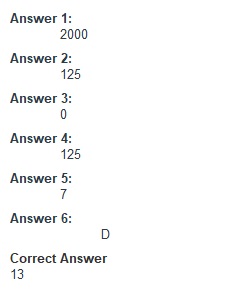


Q Question 1 0.6 / 0.6 pts Consider the hexadecimal system. Fill out the table below with the decimal equivalent of the hexadecimal digits in the top row. Hex. Digit B E C D Dec. Equivalent Question 2 1.1 / 1.2 pts Convert 2000 to its hexadecimal equivalent using division. Fill ONLY the necessary divisions. Unnecessary divisions may be filled with NA. • Fill each blank of the unnecessary divisions with NA. ÷16 = R ÷16 = R ÷ 16 = R Complete the positional notation at the bottom to show the final converting result. • Fill 0 in the proper cell(s). • Fill NA in unnecessary positions. • In the digit (hex) row, no need to explicitly type the subscript/prefix. Positional notation: Position 2 1 0 Digit (hex) Question 3 1.38 / 1.5 pts Convert bit pattern 110100001two to its hexadecimal equivalent using the 4-1-1 method. • Fill unnecessary box with NA. • No need to write subscript/prefix in the table. Position 15 down to 12 11 down to 8 7 down to 4 3 down to 0 Binary Decimal Hex. digit Question 4 1.38 / 1.5 pts Convert bit pattern 10111110010110two to its hexadecimal equivalent using the 4-1-1 method. • Fill unnecessary box with NA. • No need to write subscript/prefix in the table. Position 15 down to 12 11 down to 8 7 down to 4 3 down to 0 Binary Decimal Hex. digit Question 5 1.5 / 1.5 pts Convert 0xBD93 to its binary equivalent using the 1-1-4 method. Complete the table below. • Fill unnecessary box with NA. • No need to write subscript/prefix in the table. Position 3 2 1 0 Hex. digit Decimal Binary
View Related Questions